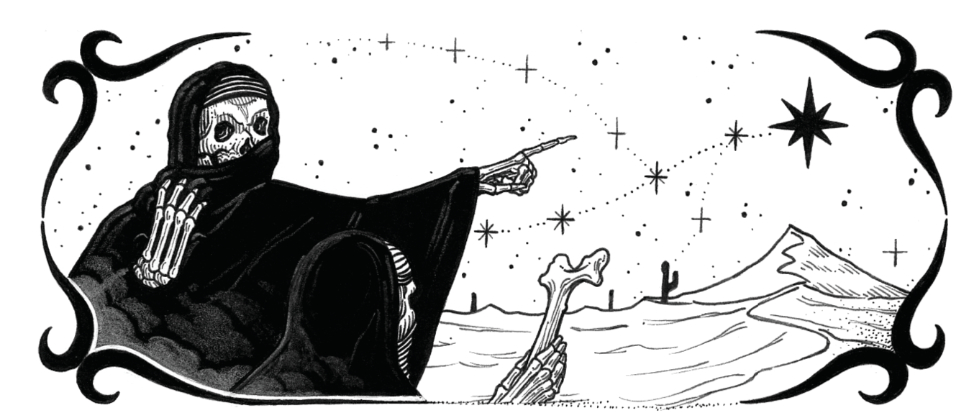
Depths of the Abyss
This feature is a reprint from Unwinnable Monthly #164. If you like what you see, grab the magazine for less than ten dollars, or subscribe and get all future magazines for half price.
———
This series of articles is made possible through the generous sponsorship of Exalted Funeral. While Exalted Funeral puts us in touch with our subjects, they have no input or approval in the final story.

In April, Emily Price wrote a wonderful feature on MÖRK BORG and the upsettingly titled supplement Portents of the Degloved Hand, and in February, Levi Rubeck wrote about his experience playing the nightmare-fueled role-playing game at PAX East. So, I don’t necessarily want to spend a lot of time in this column dissecting MÖRK BORG itself. I think I will simply quote the game designers themselves: “MÖRK BORG is a doom metal album of a game. A spiked flail to the face. Light on rules, heavy on everything else.”
The other important – dare I say innovative – aspect of MÖRK BORG is the creators’ willingness, and perhaps insistence, that players design their own settings. This is where Max Moon stepped in. An educator in the arts by training, Max took to designing his own games during the start of the pandemic with great enthusiasm: “It wasn’t until the pandemic hit that I got serious about making my own games. I think being so incredibly disappointed in the world was exactly the push I needed just to say, ‘Fuck it, I want to enjoy myself and make some beautiful things.’ The world could use a lot more play and a lot less rationalization. So, I went off the deep end, as usual.”
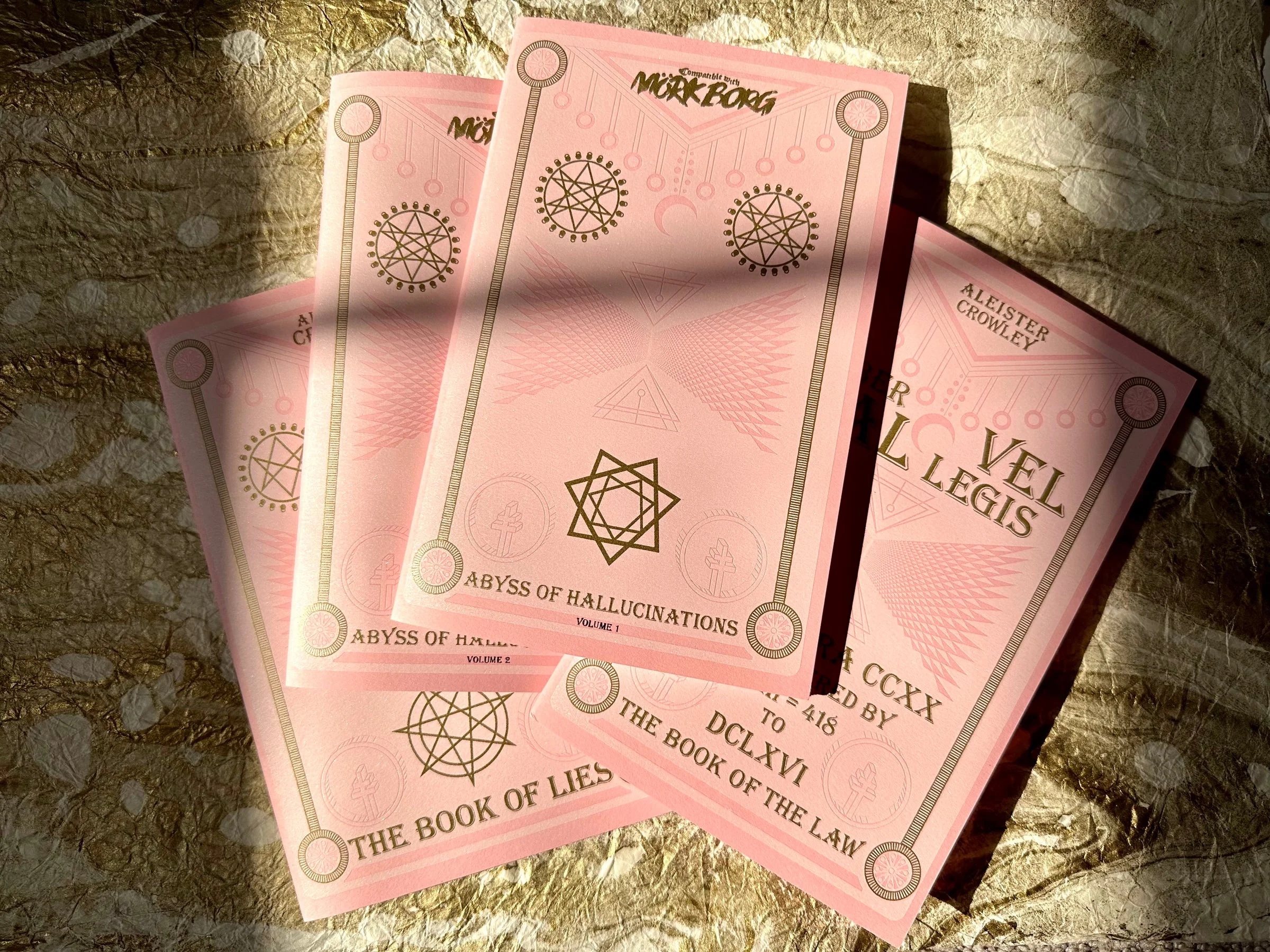
By going off the deep end, Moon means that he started to design a variety of games, including his MÖRK BORG settings, The Abyss of Hallucinations (now with two volumes), and the two accompanying adventures, “Unicursal Heptagram” and “Vaults of Eternity.” Moon was introduced to MÖRK BORG by his regular collaborator and illustrator Andy Webber. A regular player of D&D, Moon was initially confused by the “grungy artwork and bright yellow color.” Despite ripping in a metal band for a few years, the metal aesthetic wasn’t necessarily the first appealing factor for Moon. “I am an outsider when it comes to metal. When I was in a metal band, I was an outsider too. I love playing metal and I adore metal art. Black metal aesthetics and sensibilities are particularly fascinating. But my spirit has too much vomit and glitter in it to put both feet in that world.” Instead of the metal mindset of MÖRK BORG, he was intrigued because it was “the first time I had ever encountered an RPG that was treated as a holistic art object. I don’t mean as an art book. I mean the game design, the writing, the layout, the art, all of it was unified in spirit.”
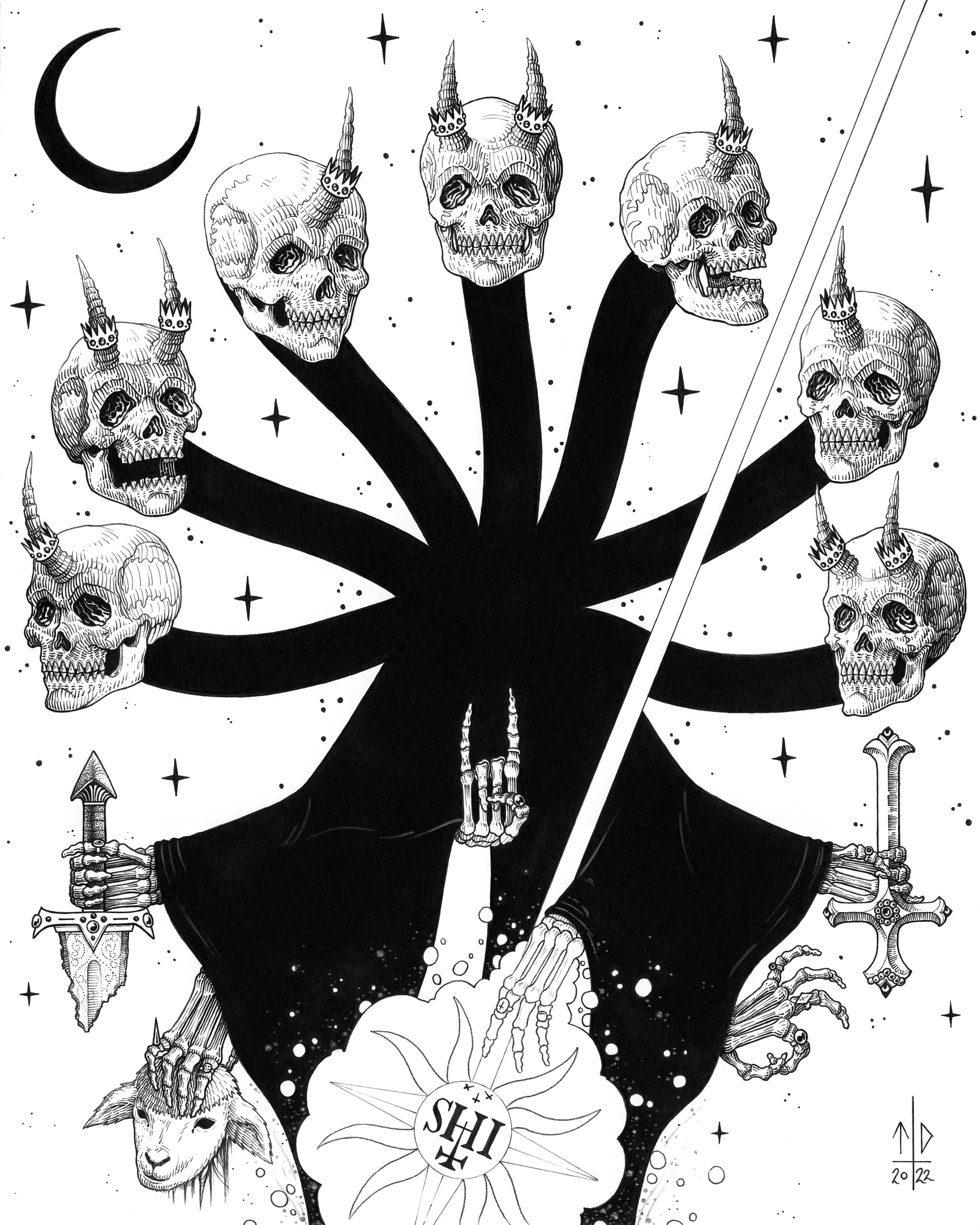
This unified artistic spirit solidified for Moon around the writings of Aleister Crowley aka the wickedest man in the world aka the Beast 666 (insert metal guitar riff here). Crowley’s contributions to the occult are innumerable and his impact has been felt across culture, from the development of rocketry to the dubious success of Scientology and, of course, the invention of heavy metal. It seems only natural to Moon then, as a bit of a student of the occult, to embed Crowley’s legacy into the metalest of all games. “For years, I used to pull bits from Aleister Crowley to integrate into games I ran, but MÖRK BORG was the first game I played where I felt like the Beast really belonged.” In The Abyss of Hallucinations, Moon kept “the spirit of Crowley’s pantheon, cosmology and philosophy. I lean into the concept of ‘Do what thou wilt’ and am erring on the side of love over accuracy. I also will admit that, at times, I have inserted intentional falsehoods, and I think the old goat would prefer it that way.”
All of this makes sense then, when you see the beautiful physical zines that Max has printed up for The Abyss of Hallucinations, paired with a copy of Crowley’s The Book of Lies. In true MÖRK BORG aesthetic, the screen-printed covers are two shades of pink with gold inlays of occult symbols and signs, a seeming contradiction to the interior featuring creatures of the darkness like the Demiurge, a lion-headed serpent who roams the abyss “of one mind and twenty-six bodies,” or the crayfish-bodied Astacus, “a mottled gelatinous crustacean with no carapace. They are cursed with an insatiable appetite for spinal fluid which they drain from their victims through their barbed maxillipeds.” The beauty of the exterior belays the grotesque things found within. As Moon says: “The cover is the first part of the designed experience. It is like a door between you and the sanctum. It is an opportunity to prepare. I also think it can serve as a warning and invitation. If I do it well, then the cover should let you know whether or not its guts are the kind you like to mess around with, or if maybe you should stay the hell away.”
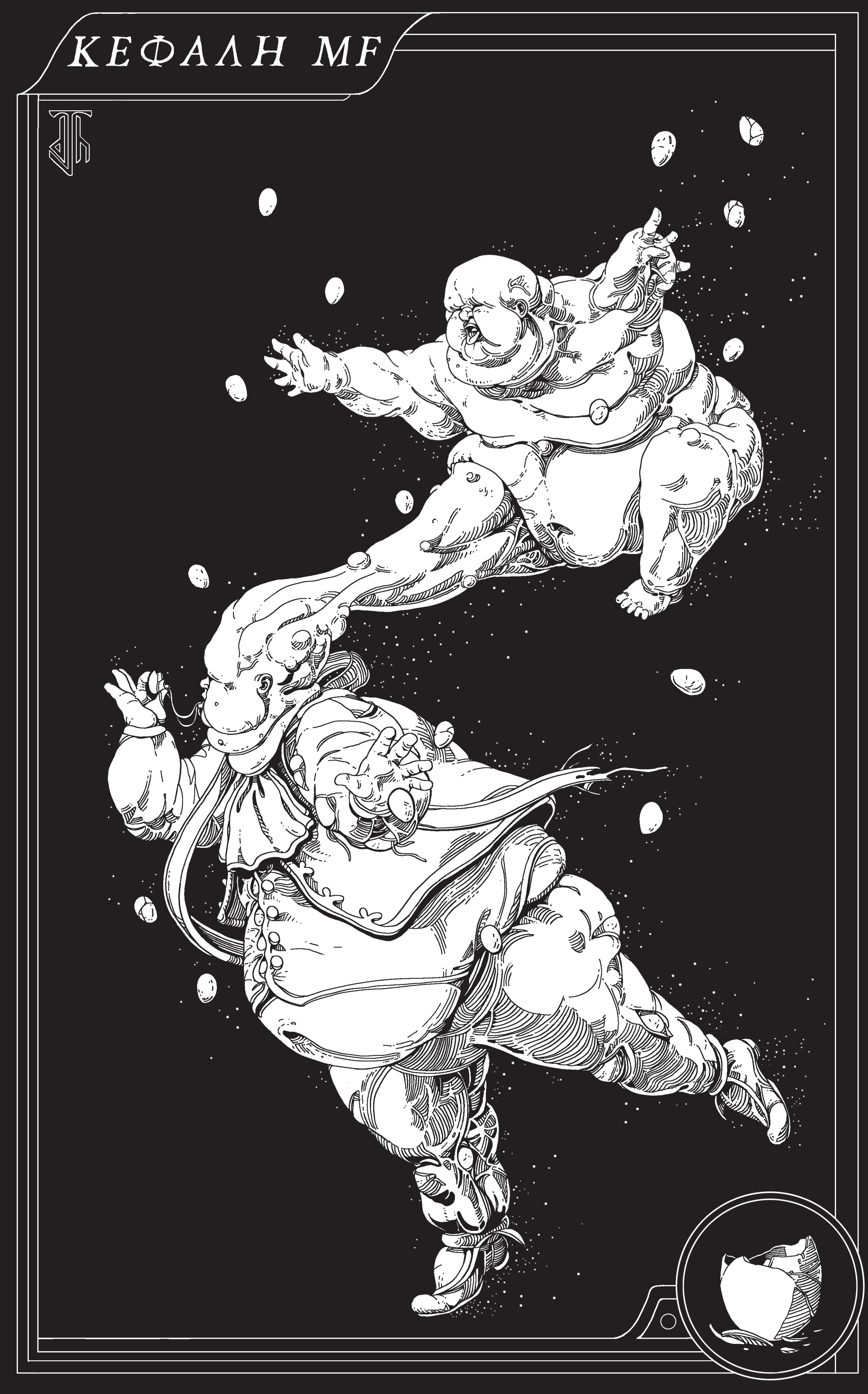
But if you did stay the hell away, you would be missing something amazing! As Moon describes it, The Abyss of Hallucinations seems like “Lisa Frank designed a black metal trapper keeper,” but with fewer dolphins, or if you will, it’s as “if a black metal band visited Graceland and was given a tour by the reanimated corpse of Douglas Adams.” The Abyss itself is full of ancient, cryptic locales like the Skidoo Inn, the Southern Cross, and the Vault of Eternity, and calls out for some reckless adventure to come die on their steps. You may find buried occult treasures in the sand dunes of The Desert of the Slouching Beast, but you’re just as likely to run up against a brilliant dragon or a rash of cultists. But, according to Moon, Crowley’s influence extends beyond only aesthetics for the game. “I treat my game design in the same way that I treat rituals. The designer gets to lay out a set of objects and procedures and if we engage with them, then we will have a meaningful experience. Understanding how it works reduces its efficacy. This is also why I disdain the whole idea of the one game for all things. It would be like approaching a dying person to ease them into the next life by blowing a noisemaker and screaming ‘HAPPY BIRTHDAY!’ We have different rituals and customs for different experiences because meaningful experience deserves particular design.”
And the rituals and designs embedded within The Abyss of Hallucinations are there to make a specific point: “There are so many horrific things in our culture that worm their way into our minds to make us not just less human, but less extant. We learn that to be in the world is to serve. And who do we serve? Corporations, religions, systems, vampiric demons who feed on our attention, money and power. The activities in which we find ourselves most human, or maybe most bestial, are play. Humanity has sought to identify itself through negation. On this long journey to separate ourselves from the world, we define what we are not. It is a toxic endeavor. We isolate ourselves, parts of ourselves, our whole selves. We want so badly to demonstrate our existence that we are willing to denigrate anything we believe is not us. We reject our infinite nature, we bind ourselves in rationality so that we can see where we end and the other begins. But to play is to break this binding. To be the beast.”
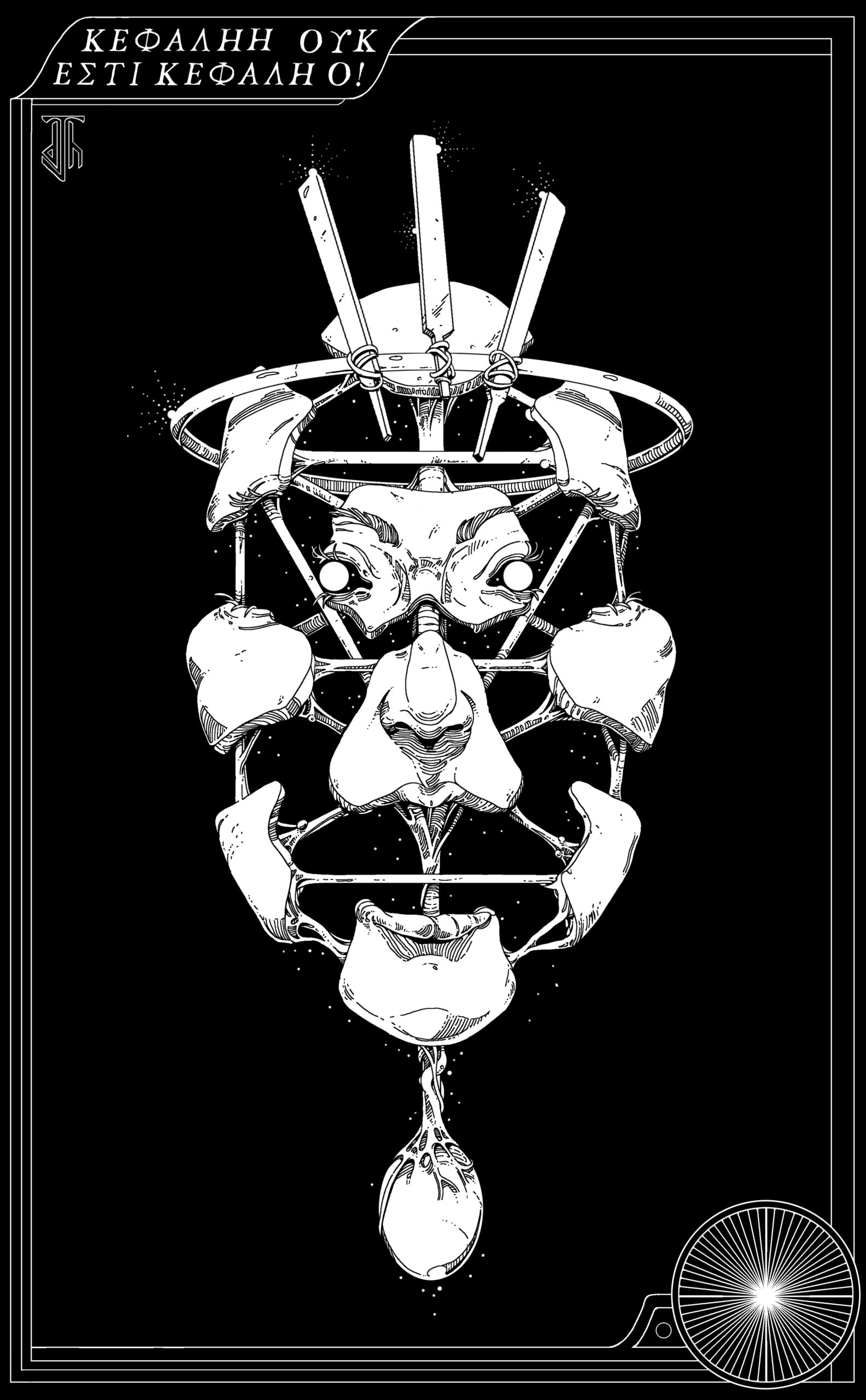
To play then, at least for Moon in the world of the Abyss and MÖRK BORG, is to participate in a ritual that can potentially break the reality laid out by the capitalist trap. Play and the rejection of the real is a method of occult resistance to the status quo. The Abyss of Hallucinations offers horrors unknown in the real, but in such horrific delights, we can find a retreat from real horrors that crush us under their weight. As Moon said, “to retreat from our nihilistic dying world into the one MÖRK BORG offered just felt like it was exactly what I needed. It was cathartic to imagine something worse, to indulge the pathetic, and to just try and survive, not for heroism or glory, but just out of pure avoidance of death.”
* * *
Check out the website for more Max Moon Games. Buy the complete Abyss of Hallucinations set (or pick up the zines individually) at Exalted Funeral!
———
Noah Springer is a writer and editor based in St. Louis. You can follow him on Twitter @noahjspringer.




